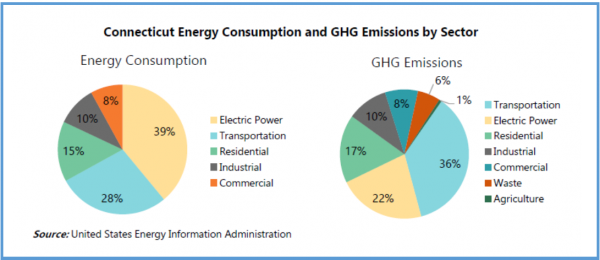State Energy Policy Needs Further Revisions, Environmental Advocates Say
/Connecticut Fund for the Environment has formally submitted its comments on the state’s draft 2017 Comprehensive Energy Strategy to the Connecticut Department of Energy and Environmental Protection. The plan is intended to shape the state’s energy policies and investments for the next three years.
“The draft energy strategy includes some important recommendations that will reduce dependence on outdated fossil fuels, landfill gas, and biomass, but it still doesn’t map out how the proposed policies will put Connecticut on a path to achieve the greenhouse gas reduction targets of the Global Warming Solutions Act,” said Claire Coleman, climate and energy attorney at CFE.
The final CES should do the following to sustain Connecticut efforts to combat climate change, CFE urged:
- Incorporate a quantitative analysis of how its policies will achieve the emissions reductions necessary to meet Connecticut’s 2020 commitment under the Global Warming Solutions Act;
- Go forward, not backward, on renewable energy by proposing a more ambitious annual increase to the renewable portfolio standard, with the minimum goal of powering 45 percent of Connecticut’s needs from renewable sources by 2030;
- Recommend a full-scale shared solar program to allow access to renewable energy for the 80 percent of Connecticut residents who can’t install solar panels on their own roofs, and remove the proposed cap on behind the meter solar;
- Bring Connecticut’s energy efficiency investment in line with neighboring states;
- Create incentive and marketing programs to encourage consumers to switch to efficient heat pumps; and
- Rapidly get more electric vehicles on the road by strengthening the CHEAPR rebate program, expanding charging infrastructure, and establishing a regional cap-and-trade program for fuels to reduce emissions.

“Meeting these goals isn’t optional—it’s required under state law that’s been on the books now for almost a decade,” Coleman stressed. “State agencies and lawmakers need to get serious about rapidly ramping up renewables and energy efficiency, cutting emissions from cars and trucks, and clearly identifying how state policies will work together to meet the 2020 and 2050 targets. That’s what we’ll be looking for in the final plan.”
The Connecticut Electric Vehicle Coalition, of which CFE is a founding member, submitted its own comments last week. The coalition emphasized the urgency of more specific plans to get EVs on the road and meet the state’s commitments under the Zero Emissions Vehicle  Memo of Understanding to get have 150,000 EVs on Connecticut roads by 2025.
Memo of Understanding to get have 150,000 EVs on Connecticut roads by 2025.
CFE, Consumers for Sensible Energy, RENEW Northeast, and Sierra Club also released an analysis by Synapse Energy Economics which concluded that a 2.5 annual increase in Connecticut’s renewable energy growth would yield significant public health, economic, and climate benefits. Increasing the Connecticut RPS to 2.5% per year, the report indicated, would add an estimated 7,100 additional jobs to New England between 2021 and 2030, or about 710 jobs per year.
The Sierra Club noted that “even the administration's own analysis shows the draft energy strategy is not sufficient to protect the climate, and that more clean energy would create jobs, grow the economy, and improve public health.”






























